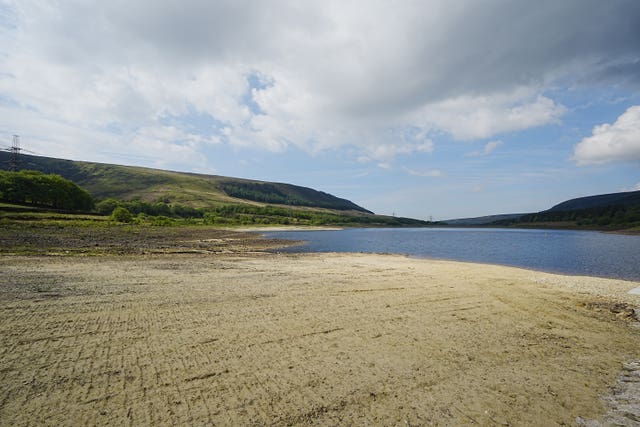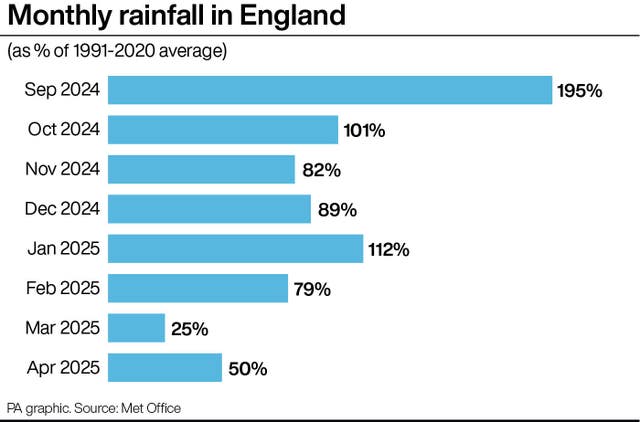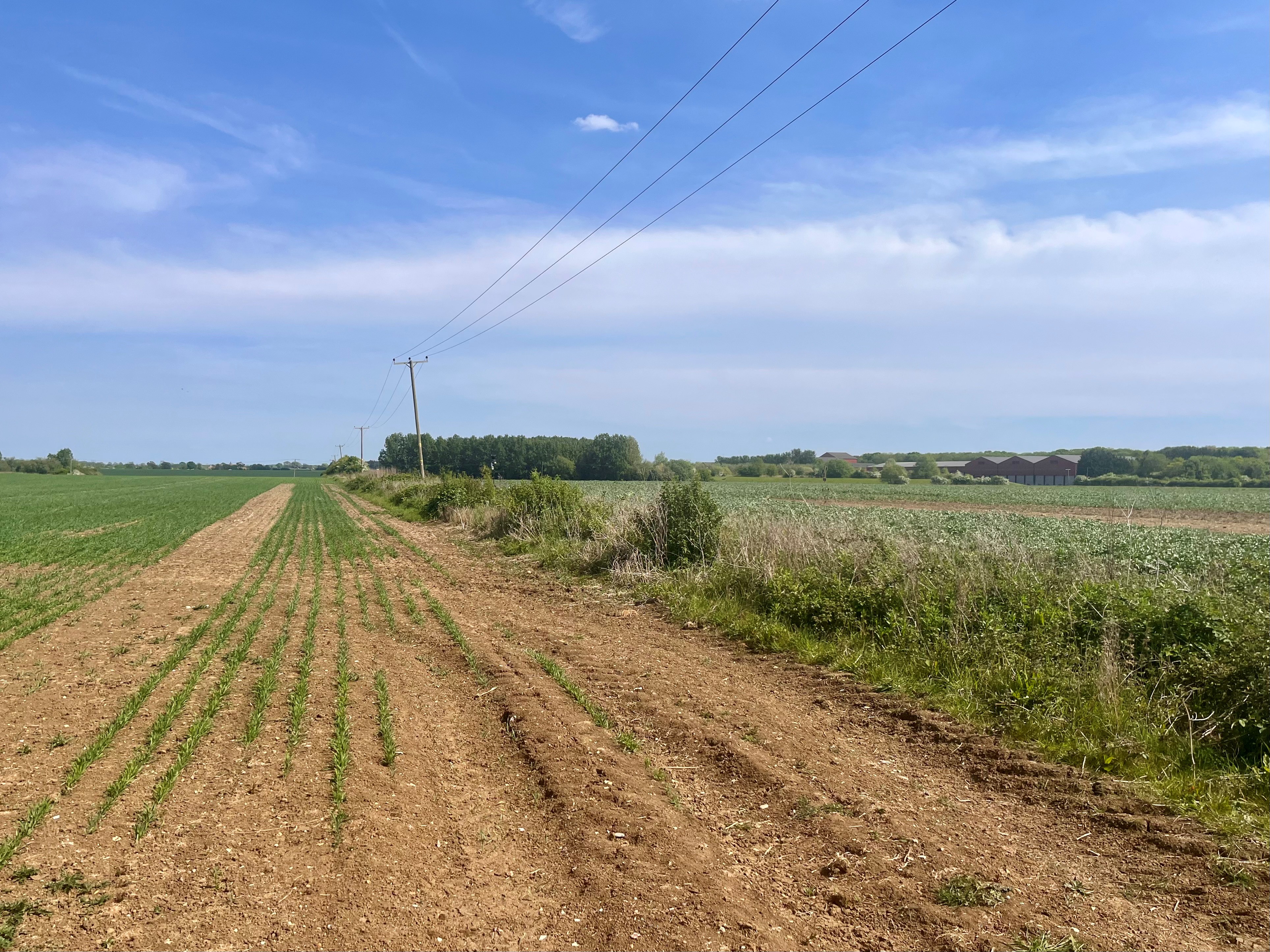England’s driest start to spring for 69 years raises risk of summer drought
The Environment Agency said no hosepipe bans are planned but warned water companies may need to put in measures including restrictions in summer.

England is facing a risk of summer drought following the driest start to spring in 69 years, with reservoirs low and farmers struggling to grow crops.
Water companies are under pressure to do more to cut leaks and help customers save water as the Environment Agency warns of a “medium” risk of summer drought.
The regulator said while there were currently no hosepipe bans planned, it warned that water companies might have to implement measures including restrictions in the months ahead.
The Government’s national drought group is meeting on Wednesday, with ministers, senior officials from the Environment Agency, water companies and other groups set to discuss the risk of drought without sustained rainfall.

At the meeting, the Environment Agency is expected to warn water companies they must do more to cut leaks and help customers use water more widely.
The warning comes as England sees its driest start to spring in March and April since 1956.
Rainfall was well below average for most of the UK in April, the sunniest on record for the month, with just 56% of expected totals recorded across the UK as a whole, and just half the average rainfall for England, Met Office figures showed.
And March saw just 43% of its average rainfall across the UK, with England getting a quarter of the rain it would normally expect for the month.
Across England, reservoirs are 84% full – compared to 90% at the end of April in the 2022 drought year.
Reservoir levels are either notably low or exceptionally low across the north east and north west of England, which have had their driest start to the year since 1929.

Farmers have had to start irrigating crops early, with more pressure on their onsite storage reservoirs.
While chalk groundwater levels are in generally a good position, river flows are below normal or lower for this time of year across northern and central England.
And wildfires have been seen in areas including Cumbria, Derbyshire and Dorset due to dry vegetation, the Environment Agency said.
The UK’s weather has see-sawed between extremes in recent years, ranging from droughts and record-breaking heat to heavy rainfall and flooding.
The top three warmest years since Met Office records began have all occurred this decade, with 2022 ranking in first place, 2023 second and 2024 fourth.
During the heatwave of July 2022, temperatures reached 40C for the first time anywhere in the country, hitting 40.3C in Coningsby in Lincolnshire.
Persistent dry spells led to many areas being declared officially in drought, with England seeing its seventh driest summer on record and south-east England its fourth driest.
But there was a marked change in 2023, with enough rain to make it England’s fourth wettest year since Met Office data began, as well as the UK’s seventh, despite very warm temperatures including the longest-ever September heatwave.
Further heavy rain the following year meant England recorded the wettest 12-month period ending in September since 1871, according to the Environment Agency.
The weather has since tilted back towards very dry conditions, with below-average UK rainfall every month so far in 2025 as well as the sixth driest March for England on record.

The Environment Agency said it is closely monitoring implementation of firms’ dry weather plans, working with farmers to help plan irrigation, and preparing advice to the public on small steps they can take to reduce water use.
National Farmers’ Union vice president Rachel Hallos said the situation on the ground remained variable across farming sectors.
But she said: “The dry conditions and lack of any substantial rainfall has meant farmers in some parts of the country have started to irrigate crops much earlier than normal – thankfully reservoirs are currently full following the wet autumn and winter.
Urging the government to recognise water for food production, she added: “The extreme weather patterns we have experienced over the past few years is impacting our ability to feed the nation.
“This should include access to water in times of shortage to be secured through planning policies that support on-farm water storage, investment in water-use efficiency on farm, and innovation in more water efficient crops and farming systems.”

Jenna Hegarty, head of policy at the Nature Friendly Farming Network, said the conditions this spring underscored the need to adapt to the already changing climate.
Nature-friendly farming, with measures to restore soil health, increase natural shade and shelter on farms, and reduce chemical use could make farms more resilient to climate impacts, she said.
“Many farmers are already leading the way, but we urgently need more support to scale up nature-friendly and climate-smart farming,” she urged.
“From improved climate-resilient infrastructure, such as new reservoirs, to increased funding that allows farmers to share knowledge and best practice, Government leadership is essential to drive this transition.”





